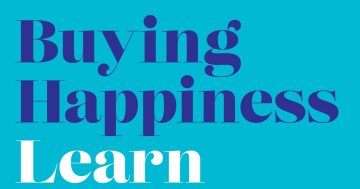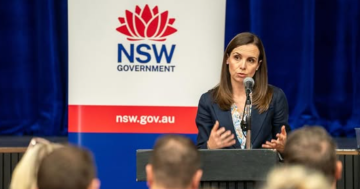Yasmin Jeffery* discusses the pros and cons of money saving challenges with an expert.
 Saving can feel like a stretch at the best of times, let alone during a cost-of-living crisis.
Saving can feel like a stretch at the best of times, let alone during a cost-of-living crisis.
Trying to do it with nothing but a dusty spreadsheet and some barely-there willpower?
Gross, not fun and may not work depending on your money story.
On the other hand, money-saving challenges offer to turn that thing you’ve always struggled with into something more achievable.
But is signing up for one — or several — money-saving challenges simply because it’s 2023 and you wish you could just hurry up and start saving already, a good idea?
As with almost everything money-related, it depends
Angel Zhong, an associate professor in finance at RMIT University, thinks money-saving challenges can be great motivation tools — especially if you don’t have a good idea of your overall financial situation yet.
“They can also help you get into the habit of saving money,” she says.
“If you have a lower level of financial literacy … or you’ve been struggling to keep track of your spending, this could help you take an important step towards achieving financial freedom.”
So how do you do it right?
This probably isn’t what you’d like to hear, but Dr Zhong strongly recommends making a budget before deciding to do any money-saving challenges.
“To empower yourself financially and achieve long-term financial freedom, it’s essential to make a budget from a long-term perspective,” she says.
“Say you want to buy a house in 10 years.
“If that’s you, your budget should be helping you work towards that long-term goal.
“Money-saving challenges should be a part of your very cohesive budget, including how much you earn, spend, owe, how much you can afford to spend in different categories and how much you can afford to save and invest.”
Once that’s done, you’ll know how much money you could potentially save
“Many of the savings challenges we see say you need to put away a certain or arbitrary amount of money each week, month or year,” Dr Zhong explains.
“These numbers are often recommended by the likes of finfluencers who have no idea what your financial circumstances are.
“If you simply follow the amounts they’ve set, you might not be doing the best thing for your finances.
“Don’t follow people online blindly.”
This is where your budget comes in.
Once you have one and know how much you could put away (without needing to dip into your savings for unexpected expenses or little treats), think about how much you would like to save and how these figures compare if they’re different.
Think about where you’re going to store that money too.
Dr Zhong says a bank account with a competitive interest rate is the safest option.
And when you’ve worked all that out, you can start looking at savings challenges.
We’ll touch on some of the options out there in a moment.
Before we do, remember: The challenges you read about here or see elsewhere online might not be a fit.
But Dr Zhong says that doesn’t mean the idea of them can’t motivate you to create a new challenge that aligns with your budget and goals.
You’ve probably seen the 52-week challenge online
The idea is that you save $1 extra for every week of the year — so that’s $1 in the first week, $2 in the second, and $3 in the third.
In the final week of December, you save $52.
Put all 52 weeks together and you’ll have saved $1,378.
Dr Zhong is wary of challenges like this with set, arbitrary numbers.
If you like the idea of it, she says you should rely on your individualised budget to help you work out what your 52 weeks of saving challenge should look like.
“And think of the purpose of doing it, too.
“Are you saving for a house?
“A rainy day or a holiday?”
The no-spend month (or day, week, year, you get the gist) challenge
This is another big one online.
The idea is that you cut out all unnecessary spending for the amount of time you’d like and put the extra money left at the end of that period in a savings account.
This means saying no to things like takeaway coffee, new clothes, meals out, manicures or toys for your kids, and only spending on essentials like paying rent/mortgage, bills and necessary food.
“If you’re a heavy discretionary spender, you’re always dipping into your savings and spending all of your salary, this could help you understand where that money [was] going [in normal, non-challenge months], in addition to creating a budget,” Dr Zhong says.
The elaborate 100-envelope challenge
For this one, you’ll need 100 envelopes, each numbered from one to 100.
The idea is that every day for 100 days, you randomly pick one of the envelopes and put the amount of money you’ve written on it inside the envelope.
Stick to it and by the end of the 100-day challenge, you’ll have saved $5,050.
You already know Dr Zhong is going to advise against most of this.
Buy the envelopes, number them and pick one every day if you like, but she doesn’t recommend defaulting to saving $5,050 in 100 days if doing so doesn’t suit you.
And at the bare minimum, put what you do save in a bank account.
Dr Zhong would never recommend leaving thousands in cash laying around.
What to do if/when you finish a challenge
At the end of it all, Dr Zhong recommends sitting down and working out how much money you’ve made over the period you gave yourself, how much you’ve saved, and how you feel the challenge went.
“Evaluate it against your long-term goals and budget to see whether it helped you achieve them,” she suggests.
“If it did, maybe it’ll work for you again.
“If it didn’t, you can always try something different next time.”
*Yasmin Jeffery is a reporter with ABC Everyday. Before that, she was a journalist and producer with ABC News Digital for two and a half years.
This article first appeared at abc.net.au











